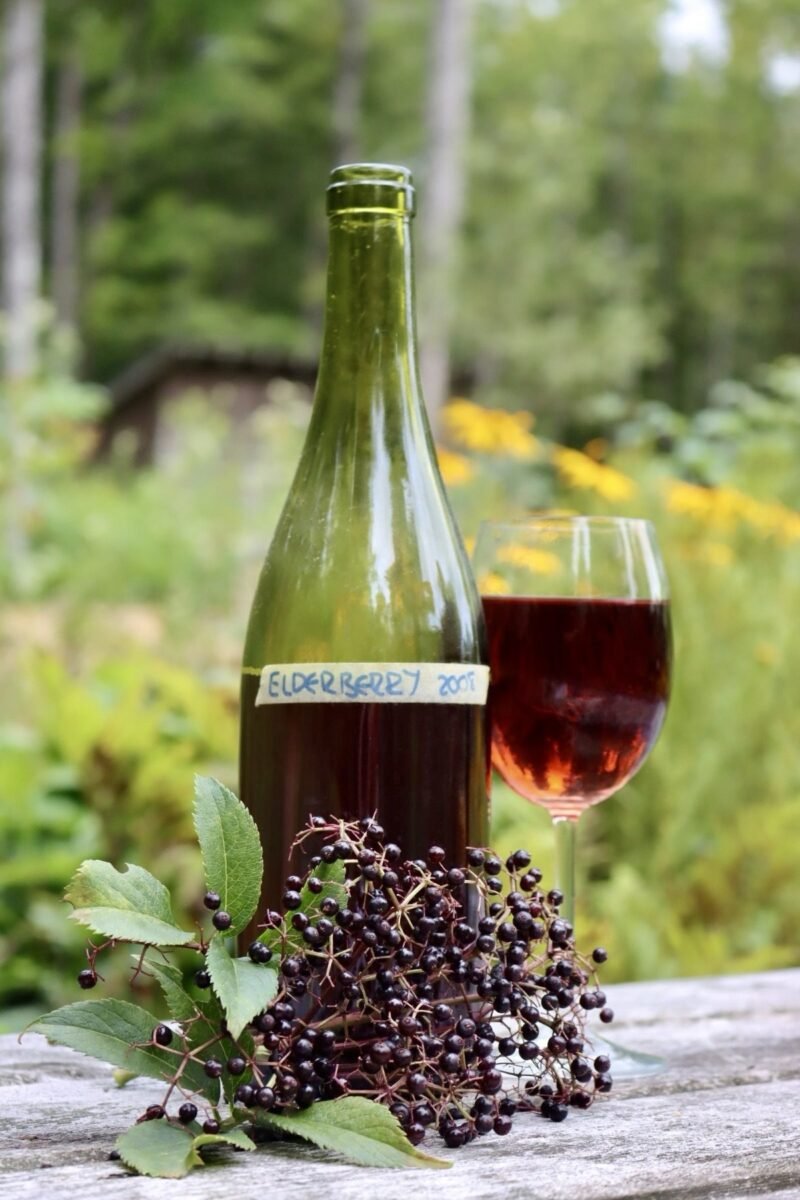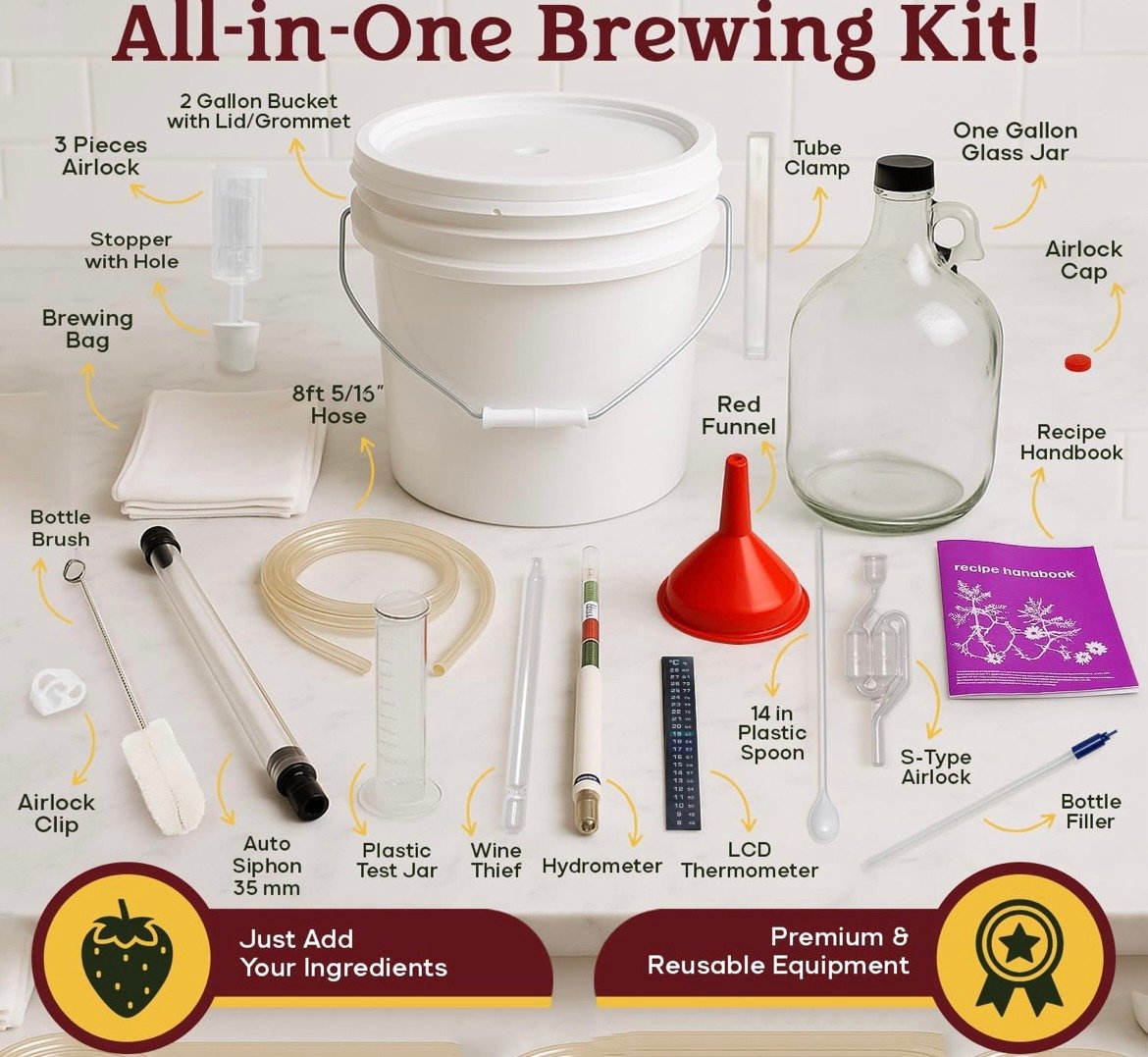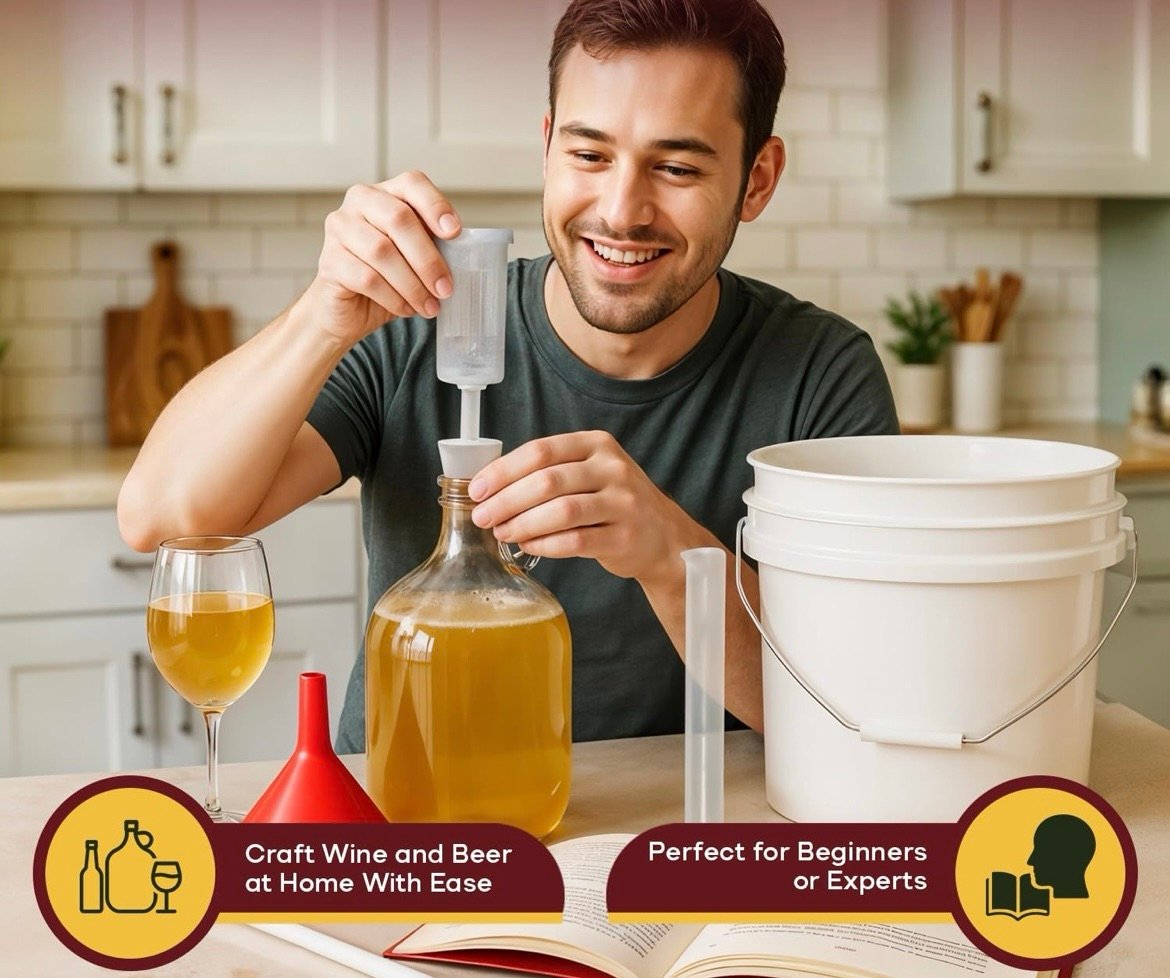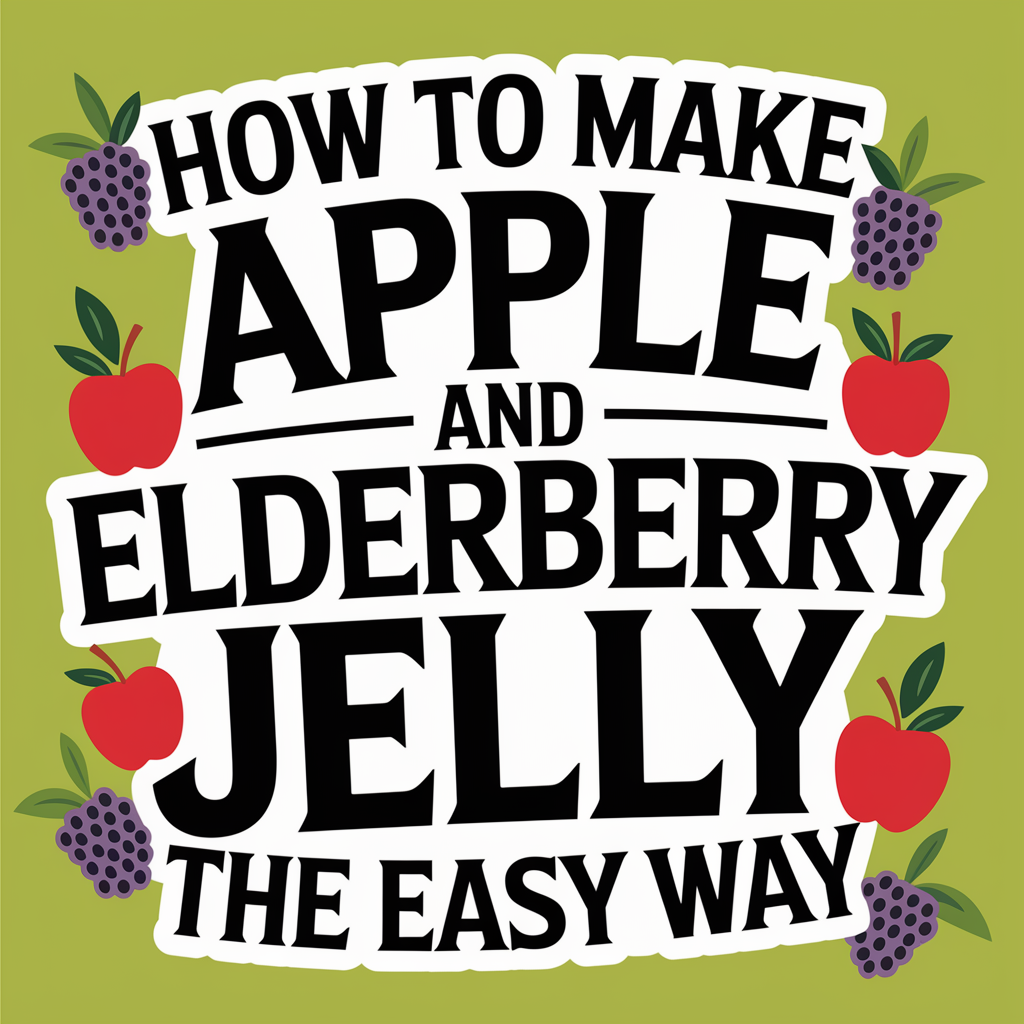
Why Elderberry Wine Is a Hidden Gem 🍷
If you’ve never tried elderberry wine, you’re seriously missing out. This bold, flavorful homemade wine has deep roots in tradition, dating all the way back to early settlers who relied on what they could forage. Elderberries — those tiny dark berries from the elder tree — were a staple for their natural health benefits and their ability to ferment into something surprisingly delicious.
Unlike grape wines that often have a syrupy finish, elderberry wine leans on the earthy, rich side. It’s slightly tart, beautifully deep in color, and carries subtle notes of spice and plum. This makes it a perfect sipping wine — or even a holiday favorite if you prefer a homebrew with character.
On top of all that, it’s easy to make at home and incredibly satisfying once it’s had time to age. Whether you’re a total beginner or a home-brewing pro, elderberry wine deserves a permanent spot on your DIY to-do list.
And if you’re looking for another delicious elderberry project, you’ve got to try this apple and elderberry jelly too — it’s a sweet-tart masterpiece that’s perfect for toast or holiday gifting.

Is Elderberry Wine Good for You? (Benefits Explained)
Believe it or not, elderberry wine isn’t just a tasty treat — it might even give your immune system a little love.
Elderberries are packed with antioxidants, especially anthocyanins, which give them that deep purple color. These compounds have been shown to help reduce inflammation, support cardiovascular health, and even fight off certain viruses. Of course, turning them into wine does reduce some of their medicinal punch, but you still retain many of the nutrients and polyphenols in moderate servings.
Plus, elderberry wine is often lower in sugar than typical fruit wines, especially when homemade. You control the process, the sweetness, and the quality. That’s a huge win compared to store-bought options full of additives or preservatives.
But don’t overdo it. This isn’t a “drink for your health” type of wine — it’s more of a “sip and enjoy, knowing you’re not drinking junk” kind of experience.
If your stomach ever feels a little off after eating raw or improperly prepared elderberries, don’t panic. It’s common. Check out this guide on what might cause stomach pain after elderberries to clear up what’s going on.

What You Need to Make Elderberry Wine at Home 🛠️
Before you dive into fermenting your own batch, let’s get your gear lined up. You can make elderberry wine with just a few basic tools, but having the right setup makes a huge difference — especially when it comes to keeping things sanitary and your batch tasting amazing.
Here’s what you’ll need:
- A large fermenter or food-safe bucket with an airtight lid
- A glass carboy for secondary fermentation
- An airlock to release gases while keeping contaminants out
- A siphon tube for clean transferring
- A hydrometer to monitor sugar/alcohol levels
- Sanitizer (this one is not optional)
Not sure where to start? You’re not alone. That’s why I recommend grabbing this complete home brewing kit 🍷from Amazon. It’s beginner-friendly but also solid enough for anyone who’s been making wine for years. It comes with everything you need — fermenter, glass carboy, airlock, hydrometer, siphon, and more. It saves time, saves guesswork, and honestly, makes the process a lot more fun.
Step-by-Step Elderberry Wine Recipe (Yes, It’s Easy)
Here’s the step-by-step method that turns fresh or frozen elderberries into a delicious homemade wine. If you’ve made jam or jelly before, you’ll find this process surprisingly doable.
Ingredients:
- 3 pounds of elderberries (fresh or frozen)
- 2 pounds of apples (or apple juice for convenience)
- 3 pounds of sugar
- 1 packet of wine yeast
- Juice of 1 lemon
- Filtered water (enough to make a 1-gallon batch)
How to Make It:
Step 1: Prep the Fruit
Gently rinse your elderberries and remove any stems or unripe berries (those are toxic raw). Chop apples if using fresh. Boil fruit in water for about 20 minutes, mashing to release the juice.
Step 2: Cool and Sweeten
Let the mixture cool, then stir in sugar and lemon juice until fully dissolved.
Step 3: Transfer to Fermenter
Strain out solids and pour the juice into your sanitized fermenter. Top off with water to hit the one-gallon mark. Add yeast and stir gently.
Step 4: Let It Ferment
Install the airlock and let it sit in a cool, dark place for 7–10 days. You’ll see bubbles — that’s your wine doing its thing.
Step 5: Secondary Fermentation
Once bubbling slows, siphon the wine into a clean glass carboy from this home brewing kit 🍷. This lets the wine clarify and age without sitting on sediment.
Step 6: Bottle and Wait (The Hard Part)
After 4–6 weeks in the carboy, bottle it up. Let it age for at least 3 months — longer if you want a smoother finish.
Still have elderberries left over? Don’t miss our easy apple and elderberry jelly recipe — it’s another fan favorite for preserving this powerhouse fruit.

How Long Should You Age Elderberry Wine?
Here’s the truth most people won’t tell you: elderberry wine gets way better with time. Sure, you can drink it a few months after bottling, but if you can be patient, you’ll be rewarded with smoother, richer, more balanced flavor.
Recommended aging timeline:
- Minimum: 3 months – drinkable, but still tart
- Ideal: 6–12 months – flavors mellow and balance out
- Best: 1+ year – fully developed, smooth, and deep
The longer you age it (as long as it’s stored properly in a cool, dark place), the better the result. If your wine tastes a bit sharp early on, don’t toss it — let time do its magic.
If you’ve ever had digestive discomfort from elderberry products, check out this guide: Stomach pain after elderberry? Here’s what might be happening. It’s a must-read before enjoying large amounts of homemade wine or syrup.

What Does Elderberry Wine Taste Like?
Elderberry wine isn’t like your typical grocery store red. It has a flavor all its own — earthy, dark, and slightly tart with deep berry notes that get smoother the longer it ages.
People often describe it as:
- Similar to a dry red wine, like cabernet or merlot
- A little wild or gamey when young (but mellow with time)
- Rich in color and bold in taste — you’ll know it’s elderberry
It pairs beautifully with hearty meals, aged cheeses, or even dark chocolate. Bonus tip: serve it slightly chilled for a more refreshing sip.
Thinking of turning it into jelly instead? You’ll love our recipe for apple and elderberry jelly, which gives that same rich flavor — just in a sweeter, spreadable form.
What Foods Pair Best With Elderberry Wine?
Elderberry wine is a bold drink — it deserves bold food alongside it. Whether you’re serving a homemade bottle at dinner or gifting it to a fellow foodie, the right pairing brings the flavors to life.
Top food pairings with elderberry wine:
- Roast meats – Think venison, duck, or even beef brisket
- Aged cheeses – Blue cheese, gouda, sharp cheddar
- Dark chocolate desserts – Chocolate lava cake, brownies
- Savory pies – Especially game or mushroom-based pies
- Spiced dishes – Anything with clove, cinnamon, or anise
If you’re already growing elderberries or preserving your harvest, don’t miss our guide on how to make apple and elderberry jelly — it’s a tasty treat that complements elderberry wine like a dream.

Is Elton John’s “Elderberry Wine” Really About Wine?
Yep, Elton John’s 1973 hit “Elderberry Wine” helped put this old-fashioned drink back in the spotlight — even if the lyrics weren’t exactly about fermenting fruit.
The song tells the story of a man longing for simpler times and the warmth of his lover’s homemade elderberry wine. While it’s more metaphor than winemaking manual, it’s one of the few pop songs to ever shout out this unique drink.
Fun fact: After the song gained popularity, elderberry wine started showing up more often in homebrew circles — and sparked curiosity among new generations.
Curious about how this old-school drink compares to other elderberry products? If you’ve ever wondered whether elderberry syrup or gummies are better, or if you’ve tried giving your kids daily elderberry vitamins, this wine brings a whole different vibe.

Ready to Make Your Own Elderberry Wine?
Whether you’re craving a bold, homemade wine or just want to try something new, elderberry wine is one of the most rewarding DIY projects out there. It’s a taste of tradition, health, and homesteading all in one beautiful bottle.
If you’re new to wine making, don’t overthink it. Grab the Wine Making Kit & Mead Making Kit – Complete Home Brewing Kit 🍷 that includes everything you need to get started: fermenter, glass carboy, siphon, hydrometer, airlock, and more. It works for both beginners and more experienced brewers who want reliable gear on hand.
And hey — once you’ve got your first batch bubbling, don’t stop there. Try pairing it with our apple and elderberry jelly for a gift basket that’ll impress anyone. Just don’t forget to save a bottle for yourself.
If you’re still curious about how elderberry affects your body, especially if you’ve had reactions before, check out our breakdown on stomach pain from elderberry to stay on the safe side.
The tradition of elderberry wine has been passed down through generations — now it’s your turn to raise a glass. 🍷 Cheers to that.
As an Amazon Associate we earn from qualifying purchases through some links in our articles.